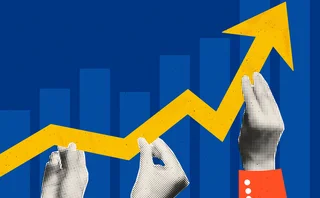
Podcast: Hagan on convexity, volatility and the London Whale
Ex-JP Morgan quant discusses his latest work and the risk failures that cost the bank $6bn in 2012

For this episode of Quantcast, I speak with Patrick Hagan, the veteran quant who co-developed the ubiquitous SABR volatility model in 2002. He is now the managing director of Gorilla Science, a consultancy that develops quantitative models for pricing, hedging and managing risk in financial markets.
Hagan and Diana Woodward, a senior researcher at Gorilla Science, recently published an alternative solution to value convexity adjustments – a correction that accounted for the non-linear relationship between interest rates and prices in securities such as constant maturity swaps.
Their analytical formula overcomes the drawbacks of the replication method for valuing convexity adjustments, simplifying the hedging of vega risk for high strikes.
Hagan says the solution reduces the computational and operational burden associated with valuing convexity adjustments and has already been adopted by some financial institutions.
He also shares his take on new innovations in financial modelling, such as rough volatility, which he praises for its ability to truly capture market behaviour. He reveals that he is working on the so-called Levy flight, a process that also relies on fractional Brownian motion, but is more tractable than other Levy processes.
The conversation ends with a recollection of the London Whale incident in 2012, which cost JP Morgan $6 billion. Hagan says the loss resulted from the bank taking excessive exposure to credit default swaps at a time when the incoming Basel 2.5 rules made it very capital-intensive to do so, and other banks had exited the market.
The lessons from that loss, Hagan says, are that historical value-at-risk cannot always be trusted, and that exposures should never be allowed to balloon to a size that cannot be efficiently liquidated.
Nowadays, banks are safer as a result of regulation that has tamed their risk appetite. But risk in financial markets hasn’t been eliminated entirely – much of it has simply been pushed to the hedge funds industry. The dangers to the financial system, Hagan says, now lurk there.
Index
00:00 Introduction
01:30 The problems with convexity adjustments
03:35 How a closed form formula can replace replication
06:50 The potential of rough volatility models
08:32 What is Levy flight and how does it work?
18:35 The London Whale and the risk management failures that led to it
27:44 Where are the risks in the financial system now?
30:00 Future research projects: cryptocurrencies
To hear the full interview, listen in the player above, or download. Future podcasts in our Quantcast series will be uploaded to Risk.net. You can also visit the main page here to access all tracks, or go to the iTunes store or Google Podcasts to listen and subscribe.
Only users who have a paid subscription or are part of a corporate subscription are able to print or copy content.
To access these options, along with all other subscription benefits, please contact info@risk.net or view our subscription options here: http://subscriptions.risk.net/subscribe
You are currently unable to print this content. Please contact info@risk.net to find out more.
You are currently unable to copy this content. Please contact info@risk.net to find out more.
Copyright Infopro Digital Limited. All rights reserved.
As outlined in our terms and conditions, https://www.infopro-digital.com/terms-and-conditions/subscriptions/ (point 2.4), printing is limited to a single copy.
If you would like to purchase additional rights please email info@risk.net
Copyright Infopro Digital Limited. All rights reserved.
You may share this content using our article tools. As outlined in our terms and conditions, https://www.infopro-digital.com/terms-and-conditions/subscriptions/ (clause 2.4), an Authorised User may only make one copy of the materials for their own personal use. You must also comply with the restrictions in clause 2.5.
If you would like to purchase additional rights please email info@risk.net
More on Cutting Edge
Overcoming Markowitz’s instability with hierarchical risk parity
Portfolio optimisation via HRP provides stable and robust weight estimates
Funding arbitrages and optimal funding policy
Stochastic control can be used to manage a bank’s net asset income
Quantum two-sample test for investment strategies
Quantum algorithms display high discriminatory power in the classification of probability distributions
Market-making in spot precious metals
A market-making framework is extended to account for metal markets’ liquidity constraints
Choosing trading strategies using importance sampling
The sampling technique is more efficient than A-B testing at comparing decision rules
A comparison of FX fixing methodologies
FX fixing outcomes are mostly driven by length of calculation window
Quantum cognition machine learning: financial forecasting
A new paradigm for training machine learning algorithms based on quantum cognition is presented
Backtesting correlated quantities
A technique to decorrelate samples and reach higher discriminatory power is presented








